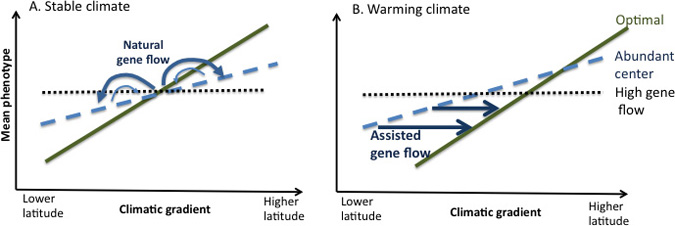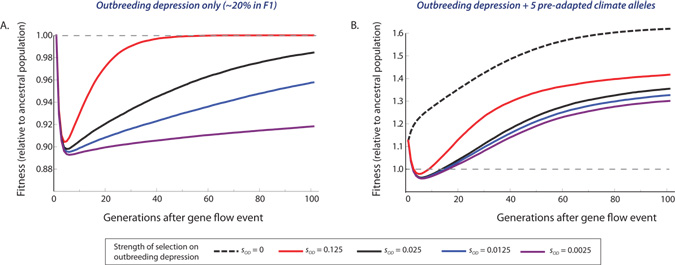
Full text loading...
Assisted gene flow (AGF) between populations has the potential to mitigate maladaptation due to climate change. However, AGF may cause outbreeding depression (especially if source and recipient populations have been long isolated) and may disrupt local adaptation to nonclimatic factors. Selection should eliminate extrinsic outbreeding depression due to adaptive differences in large populations, and simulations suggest that, within a few generations, evolution should resolve mild intrinsic outbreeding depression due to epistasis. To weigh the risks of AGF against those of maladaptation due to climate change, we need to know the species' extent of local adaptation to climate and other environmental factors, as well as its pattern of gene flow. AGF should be a powerful tool for managing foundation and resource-producing species with large populations and broad ranges that show signs of historical adaptation to local climatic conditions.

Article metrics loading...

Full text loading...


Data & Media loading...
Supplemental Material
Download all Supplemental Material as a single PDF. Includes Supplemental Text and literature cited, and Supplemental Figures 1-2 (also reproduced below). Supplemental Figure 1: In a stable climate, gene flow will reduce local adaptation (A). Species with an abundant center distribution will have more natural gene flow from central to marginal populations than the reverse, creating a migration load and reduced fitness towards range peripheries compared to optimal locally adapted phenotypes (after Garcia-Ramos and Kirkpatrick 1997). High levels of gene flow will homogenize populations and prevent local adaptation. With climate warming, leading edge (cold-adapted) populations in an abundant center distribution will become better adapted, while lagging edge (warm) populations will have worse maladaptation and have a high risk of extirpation (B). Assisted gene flow (AGF) could maintain evolutionary lineages by moving individuals to the cooler climates to which they are adapted. Supplemental Figure 2: The recovery from outbreeding depression following a one-time introduction of 20% foreign genotypes. All parameters are identical to the example in Figure 2 of the main text, except the population begins with 20% foreign genotypes rather than 5% as in Figure 2.

